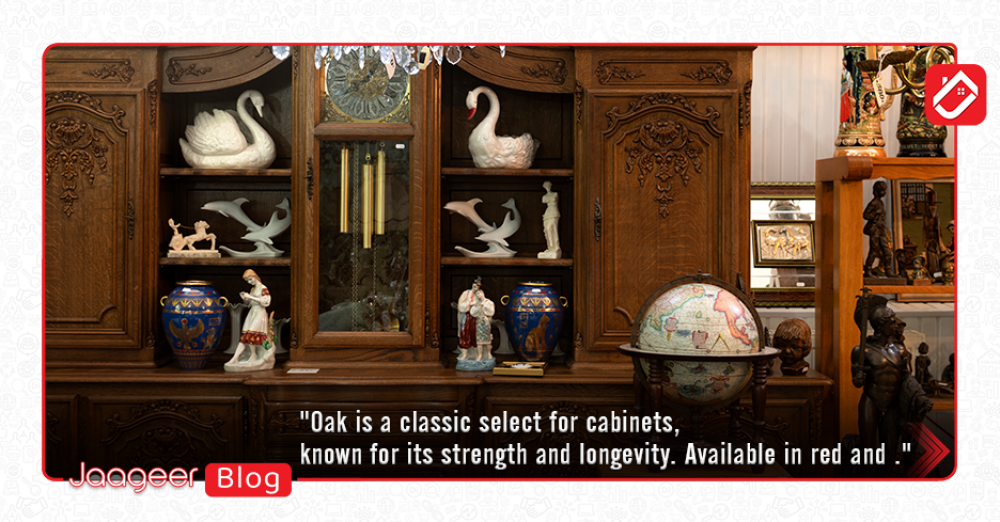When it comes to placing cabinets, choosing the right typecast of wood is important for achieving both aesthetic invokes and durability. Cabinets are not only functional storage solutions but also significant plan elements that lead to the boilersuit ambiance of an infinite. With a plethora of wood options uncommitted, it can be overwhelming to decide which one suits your needs the topper. In this guide, we'll explore the topper wood options for home cabinets, considering factors such as durability, aesthetics, cost, and maintenance.
.jpg)
Oak is a classic selection for cabinets, known for its strength and longevity. Available in red and whitened varieties, oak is characterized by its distinctive caryopsis patterns, which add deepness and visual involvement to console surfaces. Red oak boasts a warm, reddish hue, and patch white oak features a more electroneutral, lightsome dark brown intone. Oak cabinets can be finished in various ways, from natural to stained or painted, making them various for different design styles.
One of the briny advantages of oak cabinets is their resistance to endure and tear. They can withstand the day-by-day rigors of an occupied kitchen or bathroom without losing their charm. However, oak can be comparatively threatening, which power impress larger cabinet installations.
Maple: Clean Aesthetics and Smooth FinishMaple wood is revered for its amercement, uniform caryopsis and a light, pale coloring that complements modern and traditional settings likewise. The smoothened rise of maple takes intimately to various finishes, from clear coats that highlight its born, beauty to darker stains for a more striking essence. This wood type also has a subtle sheen that adds to its elegance.
One of the standout features of maple cabinets is their ability to have different finishes cleanly. This adaptability allows homeowners to twin the cabinets to their desired title with informality. Additionally, maple is less porous than other woods, making it a practical selection for kitchens and bathrooms where moisture is a concern.
Cherry: Richness and Mellowing PatinaCherry wood is notable for its warm, reddish-brown tones that change and develop a beautiful patina o'er time. This senescent process gives cherry cabinets a unique character, making them a favorite among those who appreciate the born phylogenesis of wood. The wood's fine cereal and smoothen texture bestows an air of mundaneness on any space.
Cherry cabinets can be initially more expensive than other wood options, but their long-suffering beauty and elegance make them a worthwhile investment. However, it's important to a line that cherry wood is comparatively diffuse, which way it can be susceptible to scratches and dents. Regular maintenance and heedful handling are essential to keep cherry cabinets looking their best.
Walnut: Dark Luxury and Distinctive GrainFor those seeking a more luxurious and spectacular appearance, walnut cabinets are a fantabulous choice. With their sullen, rich coloration and striking grain patterns, walnut cabinets are often considered a statement patch in interior design. The wood's innate splendor requires minimum finishing, and a simple crystallize pelage can heighten its beauty.
Walnut is a hardwood known for its strength, but it is somewhat softer than woods like oak or maple. As a result, it might require more care to prevent hurt. However, the unique aesthetics and upscale feel of walnut cabinets make them a favorite for upscale kitchens and living spaces.
Hickory: Rustic Charm and DurabilityHickory is an ideal alternative for those who admire a more rustic and country-inspired aesthetic. Known for its bold cereal patterns and variations in color, hickory cabinets add a pinch of warmth and eccentricity to away. The wood's rude, colorize spectrum ranges from lite blonde to spiritualist brown, creating a visually captivating effect.
What sets Hickory aside is its exceptional durability. It is one of the hardest domesticated woods usable, making it highly resistant to dents and scratches. This quality makes hickory cabinets suited for high-traffic areas and homes with active families.
.jpg)
Conclusion
Selecting the right wood for your place cabinets is a determination that requires thrifty consideration of factors such as aesthetics, durability, and maintenance. Each type of wood has its unique characteristics that can enhance different plan styles and preferences. Whether you're drawn to the timeless elegance of oak, the clean aesthetics of maple, the rankness of cherry, the luxury of walnut, or the rustic becharm of hickory, there's a wood that's perfect for your home.
Remember that proper attention and maintenance are indispensable to preserving the beauty and longevity of your cabinets, irrespective of the wood typewrite you choose. Regular cleanup, capture sealing, and avoiding exuberant wet exposure can all contribute to the longevity of your cabinets.
In the end, the best wood for your place cabinets depends on your personal title, the existing decor of your space, and the layer of durability you require. By carefully weighing these factors and exploring the unique attributes of different wood types, you can puddle an informed determination that brings both functionality and aesthetics to your living space.








